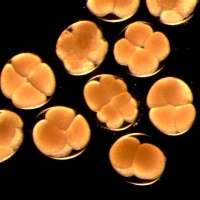Female sea urchins hedge their bets in the mating game

Sleeping around pays off for females, according to an international team of evolutionary biologists.
The main advantage of multiple mating for females (polyandry) is an increased survival rate amongst offspring - between five and 12 per cent higher - compared to when females mate with a single male.
Researchers at The University of Western Australia's Centre for Evolutionary Biology, in collaboration with an investigator at Kagawa University, Japan, published their findings today in Proceedings of the Royal Society B.
Lead author, UWA's Assistant Professor Paco Garcia-Gonzalez, who is currently based in Seville at the Spanish Research Council's Donana Biological Station, said the team used sea urchins to evaluate the benefits that females gain from polyandry.
"Sea urchins are easily induced to spawn thousands of gametes, which provide unprecedented control over in vitro fertilizations," Assistant Professor Paco Garcia-Gonzalez said. "Another advantage of using sea urchins is that this model system makes it possible to simulate a study over many generations to determine whether any benefits of polyandry persist.
"In this way, we were able to determine whether any observed benefits of polyandry depend on the ability of females to effectively 'hedge their bets' in their choice of the most suitable males," he said.
The researchers split thousands of captive sea urchin eggs into batches and evaluated the results when some batches were exposed to the sperm of single males compared to other batches exposed to the sperm of three males. The team examined the results over thousands of zygotes (cells formed by the union of egg and sperm) and across several successive simulated 'generations'.
They found that by 'hedging their bets', or protecting themselves from making a wrong mating choice, female sea urchins exhibited enhanced reproductive fitness.
"Polyandry is a widespread behaviour known to have far-reaching evolutionary and ecological implications," Assistant Professor Paco Garcia-Gonzalez said. "And our study provides tantalising insights into the possible evolutionary origins of this behaviour."
More information: "Mating portfolios: bet-hedging, sexual selection and female multiple mating." Proceedings of the Royal Society B DOI: 10.1098/rspb.2014.1525Published 19 November 2014. rspb.royalsocietypublishing.or … .1098/rspb.2014.1525
Journal information: Proceedings of the Royal Society B
Provided by University of Western Australia



















